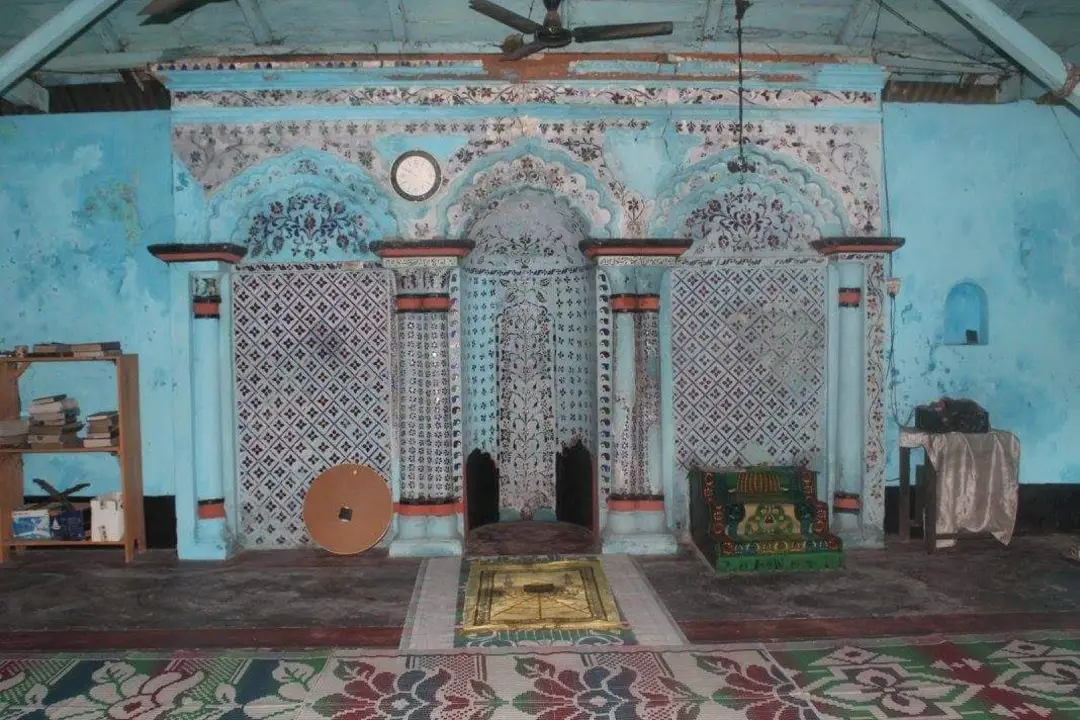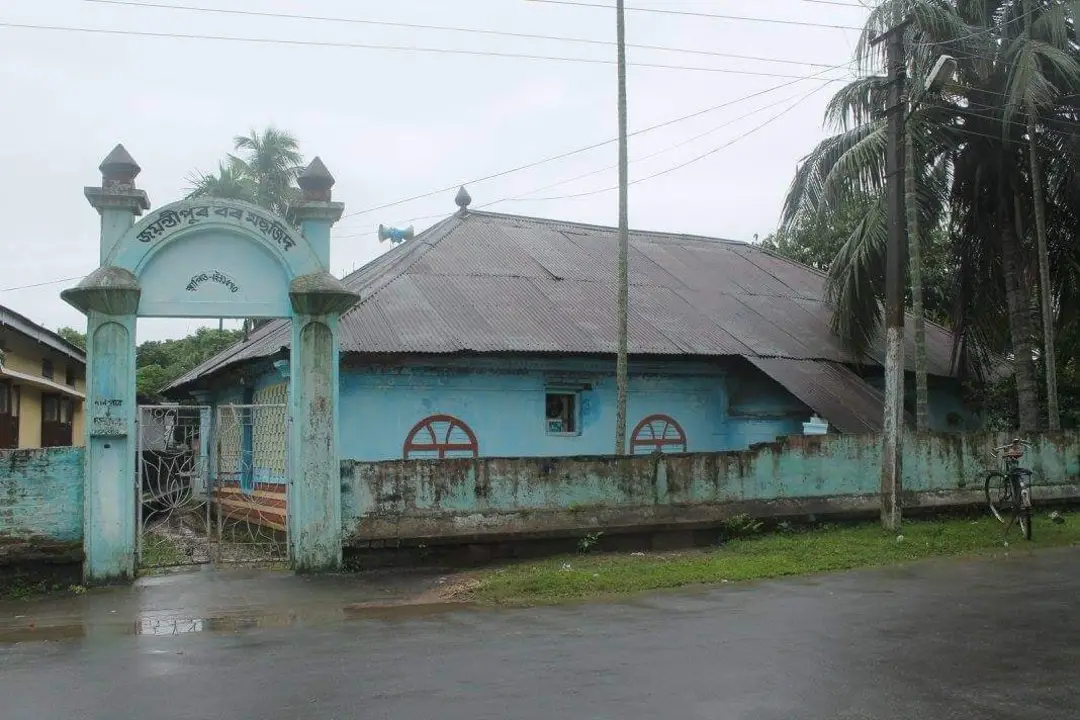

Bor Masjid, located in the quiet village of Jayantipur, in Nagaon district of Assam, is one of the region's oldest and most historically significant mosques. Constructed in 1570, this mosque offers a unique insight into the syncretism between Islamic architecture and Assamese cultural traditions. While many ancient mosques across India are widely recognized for their grandeur, Bor Masjid stands out for its simplicity and its integration of local architectural features, reflecting a harmonious blend of cultures. The mosque’s most striking feature is its roof, which is crowned by a kalashi, a spire commonly seen on Assamese Namghars (prayer halls in Assamese Vaishnavism). This unique design element highlights the close cultural exchanges that have shaped religious structures in Assam, where Hinduism and Islam have coexisted for centuries. Inside the mosque, the simplicity of the design adds to its spiritual aura, with an open prayer hall that can accommodate a modest congregation. Unlike some of the grand mosques in other parts of India, Bor Masjid emphasizes functionality and the spiritual needs of its worshippers. The mosque holds a prominent place in Assam's Islamic heritage as it predates many of the more famous Islamic architectural sites in India, such as the Taj Mahal and Jama Masjid in Delhi. It continues to serve as a religious center for the local Muslim population, particularly for daily prayers and Friday Jumu'ah. Bor Masjid is not just a religious institution but also a cultural monument. The mosque is considered an essential part of Assamese Muslim identity, representing the peaceful coexistence and integration of different religious practices and architectural traditions in Assam. Every year, it attracts not only local worshippers but also tourists and historians interested in learning about the unique cultural landscape of Assam. Today, Bor Masjid is maintained by the local community, which takes pride in preserving its historical significance while ensuring it remains a functional place of worship. Efforts are regularly made to conserve its structure and uphold its traditional architectural integrity.